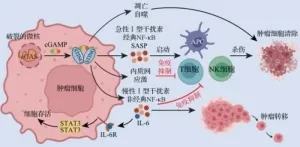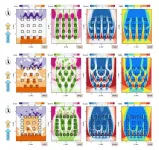(Press-News.org) Less than twenty minutes after finishing this article, your brain will begin to store the information that you’ve just read in a coordinated burst of neuronal activity. Underpinning this process is a phenomenon known as dendritic translation, which involves an uptick in localized protein production within dendrites, the spiny branches that project off the neuron cell body and receive signals from other neurons at synapses. It’s a process key to memory—and its dysfunction is linked to intellectual disorders.
That makes the inner workings of dendritic translation a “holy grail for understanding memory formation,” says Rockefeller’s Robert B. Darnell, whose team just published a study in Nature Neuroscience describing a new platform capable of identifying the specific regulatory mechanisms that drive dendritic translation. The team leveraged a method, dubbed TurboID, to discover an entire suite of previously unknown factors in memory formation, revealing now mechanisms that underlie how protein synthesis in dendrites contributes to learning and memory. The findings may also have implications for intellectual disabilities, such as Fragile X syndrome.
“Technological limitations have long prevented a comprehensive inventory of the activity at the synapse involved in memory formation,” says lead author Ezgi Hacisuleyman, who conducted the research as a postdoctoral researcher in Darnell’s laboratory. She is now an assistant professor at The UF Scripps Institute. “Our new techniques can accomplish this with extremely high resolution to look at neurons in vitro that are closely mimicking what we see in the brain.”
“Hacisuleyman’s work defines a whole new biochemical pathway which fits with, complements, and vastly expands what we already knew about memory and learning,” adds Darnell, the Robert and Harriet Heilbrunn professor.
A unique way to metabolize RNA
Memory formation centers around the hippocampus, a brain region so central to learning that, when surgeons removed it from people with epilepsy in the 1940s, the patients remembered their childhoods but lost the ability to form new memories. It has since become clear that memories form, in part, because of new protein synthesis made locally in the dendrites of the hippocampus.
Darnell, a physician-scientist, observed the importance of dendritic translation firsthand while working with patients whose immune systems had attacked the hippocampus. “I would talk to a patient for 30 minutes, leave the room, walk back in, and it was like they had never seen me before,” he says. “That’s when I began focusing on why neurons of the hippocampus have their own system for regulating RNA metabolism—a system that no other cell in the body uses.”
That system, it turns out, lies at the heart of how our brains form memories and learn new information, and became a focus for the Darnell lab, culminating in his team’s 2003 development of CLIP, a method that allowed researchers to study the proteins that bind and influence RNA. But limitations remained. “Many details about how neurons respond to stimuli at the dendrites were still missing,” Hacisuleyman says. “We needed that information, because that plays a role in determining how neurons function—and where things often go awry in neurologic disease.”
1,000 micropeptides
To get a better idea of the role that changes in dendrites play in learning, Hacisuleyman extended the TurboID platform to works in concert with RNA-sequencing, CLIP, translation and protein analysis. The platform allowed the team to track activity in dendrites before, during, and several minutes after the neuron activates, capturing the moments critical to protein synthesis in the cell and, more importantly, the stage considered key to memory formation.
An analysis of these crucial moments revealed a microscopic upheaval in the dendrite. Upon activation, local ribosomes jump onto mRNAs, an action that has all the biochemical hallmarks of memory formation, and which models predicted will cause the dendrite to produce not only new proteins, but 1,000 small proteins known as micropeptides, with as-yet unknown function. The team also identified an RNA-binding protein that helps seal the connection between these ribosomes and mRNA, and demonstrated that if that protein is disabled, the proposed micropeptides will not form.
“We never knew these micropeptides might even exist,” Darnell says. “It opens a new field of study, where we can ask what these peptides might be doing and how they could play into memory formation. It’s such a vast discovery that there are dozens if not hundreds of avenues in which to pursue this.”
Among the many observations that researchers will unpack in future studies, one stood out: the team noted that a certain protein stood out for its prolific binding of mRNA in the dendrite. The protein, called FMRP, is key to brain development and function, and genetic mutations that adversely impact FMRP contribute to Fragile X syndrome, one of the most common genetic causes of intellectual disability. “Our findings fit nicely with the molecular biology of FMRP, and also open the door to future insights into what is going wrong in Fragile X,” Darnell says.
Beyond the paper’s immediate findings, dendritic-TurboID could also allow researchers to examine protein synthesis in other brain regions and apply the findings to different diseases. “We can now begin to look at many other sites with a fine-toothed comb,” Hacisuleyman says.
“When you develop a new technique as Hacisuleyman did, you enter a room that nobody has ever been in before,” Darnell adds. “The light turns on, and the findings just take your breath away.”
END
New technique sheds light on memory and learning
2024-04-09
ELSE PRESS RELEASES FROM THIS DATE:
Unlocking the body's hidden weapon against cancer: the role of broken chromosomes
2024-04-09
Scientists have unraveled the mechanisms of the Cyclic guanosine monophosphate-adenosine monophosphate synthase-stimulator of interferon genes (cGAS-STING) signaling pathway activated by micronuclei, as well as its significant effects on tumor immunity. This study illuminates how chromosomal instability, marked by micronuclei formation, plays a critical role in controlling the capacity of the innate immune system to regulate tumor progression. These findings deepen our understanding of the intricate relationship between ...
No link between acetaminophen use during pregnancy and children’s risk of autism, ADHD, and intellectual disability says large sibling study from Drexel University and Sweden’s Karolinska Institutet
2024-04-09
Under Embargo Until:
April 9, 2024
11 AM ET
No Link Between Acetaminophen Use During Pregnancy and Children’s Risk of Autism, ADHD, and Intellectual Disability Says Large Sibling Study from Drexel University and Sweden’s Karolinska Institutet
PHILADELPHIA -- In the largest study to date on the subject, researchers found no evidence to support a causal link between acetaminophen use during pregnancy and increased risk of autism, ADHD and intellectual disability in children. The findings, using data from a nationwide cohort of over 2.4 million children born in Sweden, including siblings not exposed to the drug before birth, were published today in the Journal of the ...
A smarter city skyline for flood safety
2024-04-09
WASHINGTON, April 9, 2024 — A city’s skyline — the distinctive shapes and arrangements of its buildings — impacts the safety of its population during floods. When the streets flood, pedestrians can be swept under the current and injured or killed. With climate change and rising urbanization, the likelihood and severity of urban flooding are increasing.
Not all city blocks are created equal. In Physics of Fluids, an AIP Publishing journal, researchers from Beijing Normal University, Beijing Hydrological Center, and the China Institute of Water Resources and Hydropower Research investigated how city design contributes to pedestrian ...
Is Interstate 95 the connection for moving guns up and down the east coast?
2024-04-09
Interstate gun transfers are a major contributor to gun crime, injury, and death in the United States. Guns used in crimes traced to interstate purchases move routinely between states along multiple major transportation routes, a phenomenon known as the “Iron Pipeline”, which refers most commonly to the Interstate 95 corridor. According to a new study at the Columbia University Mailman School of Public Health, other such “Iron Pipelines” exist throughout the country, playing a significant role in the interstate transfer of firearms used in crimes. The findings are published in JAMA Network Open.
The researchers aimed to ...
Acetaminophen use during pregnancy and children’s risk of autism, ADHD, and intellectual disability
2024-04-09
About The Study: Acetaminophen use during pregnancy was not associated with children’s risk of autism, attention-deficit/hyperactivity disorder (ADHD), or intellectual disability in sibling control analysis. This suggests that associations observed in other models may have been attributable to familial confounding.
Authors: Brian K. Lee, Ph.D., of Drexel University in Philadelphia, is the corresponding author.
To access the embargoed study: Visit our For The Media website at this link https://media.jamanetwork.com/
(doi:10.1001/jama.2024.3172)
Editor’s Note: Please see the article for additional information, including other authors, author contributions ...
Bacteria in cancer unmasked
2024-04-09
Bacteria in cancer unmasked - a closer look at our microscopic co-inhabitants
Researchers at the Netherlands Cancer Institute have compiled a detailed catalogue of bacteria living in cancer metastases. Having analyzed over 4000 tumors, they shed light on the diversity of these co-inhabitants and how they might interact with cancer cells and their surroundings. For example, certain bacteria were linked to a worse response to immunotherapy. This study paves the way to a better understanding of how bacteria help or hinder cancer (therapy), and how we can use this for patients’ ...
Top factors in nurses ending health care employment between 2018 and 2021
2024-04-09
About The Study: The top contributing factors for leaving health care employment were planned retirement, burnout, insufficient staffing, and family obligations in this cross-sectional study of 7,887 nurses. The leading reasons signal opportunities for employers to reattract an existing nurse workforce and retain currently employed nurses.
Authors: K. Jane Muir, Ph.D., R.N., F.N.P.-B.C., of the University of Pennsylvania in Philadelphia, is the corresponding author.
To access the embargoed study: Visit ...
Firearm ownership and support for political violence in the United States
2024-04-09
About The Study: In this survey study with 12,000 participants, firearm owners were only moderately more supportive of political violence than nonowners. Recent purchasers and owners who always or nearly always carried firearms in public were more supportive of and willing to engage in political violence than other subsets of firearm owners. These findings can guide risk-based prevention efforts.
Authors: Garen J. Wintemute, M.D., M.P.H., of the UC Davis School of Medicine in Sacramento, California, is the corresponding author.
To access the embargoed study: Visit ...
Nurses cite employer failures as their top reason for leaving
2024-04-09
PHILADELPHIA (EMBARGOED UNTIL APRIL 9, 2024 at 11:00 AM EST) – A new study from the University of Pennsylvania School of Nursing’s Center for Health Outcomes and Policy Research (CHOPR) – published in JAMA Network Open today – showed that, aside from retirements, poor working conditions are the leading reasons nurses leave healthcare employment. These study findings come at a time when hospital executives cite staffing problems as their most pressing concern.
“Prior studies evaluate nurses’ ...
New technique lets scientists create resistance-free electron channels
2024-04-09
An international research team led by Lawrence Berkeley National Laboratory (Berkeley Lab) has taken the first atomic-resolution images and demonstrated electrical control of a chiral interface state – an exotic quantum phenomenon that could help researchers advance quantum computing and energy-efficient electronics.
The chiral interface state is a conducting channel that allows electrons to travel in only one direction, preventing them from being scattered backwards and causing energy-wasting electrical resistance. Researchers are working to better understand the properties of chiral interface states in real materials ...


